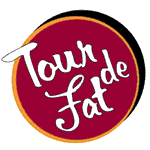The 1% of trips taken by bike in the U.S. save the American people $4.6 billion each year.
Here are some useful numbers to know:
1. According to Forbes, the average annual cost of operating a bike is $308. The average cost of operating a vehicle is $8,220.
2. According to the Political Economy Research Institute at the University of Massachusetts-Amherst, bike path and trail projects create more jobs that highway projects.
3. The more paths there are, the more people will use them (it seems intuitive, but it’s an important point when trying to win legislative support and funding for more bike and pedestrian paths).
4. Transportation is overtaking housing as the single largest household expenditure
5. If American drivers replaced 1 four-mile car trip with a bike trip per week for one year it would save the U.S. 2 billion gallons of gas. If we assume that gas is $4 /gallon (a fairly low estimate), that would total a savings of $7.3 billion a year.
It seems that supporting cycling infrastructure would:
1. Help with Health Care costs (a hot button issue at the moment) by promoting better health
2. Reduce dependence on foreign oil (something nearly all Americans can agree is a good idea)
3. Reduce the deficit by promoting federal investments that generate the maximum economic activity
Really, what is not to love about cycling?
Source: SF Streetsblog

